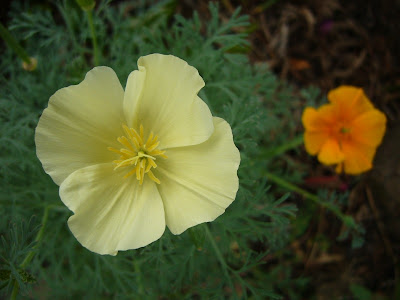Wednesday, July 09, 2008
Previous Posts
- Meadow Beauty, Rhexia virginica aka Handsome Harr...
- Interesting Fungus, Stemonitis splendens; Chocolat...
- Bug, Wildflowers and Miscellaneous photos
- Stewartia pseudocamellia Blooms!
- Lilies and More
- Spider and Portulacas
- Christmas in June?
- Roses
- GBBD one day late
- This and That. Normal first time bloom and Giants.
Subscribe to
Comments [Atom]




































10 Comments:
It looks like you are getting rain, we have had some 5 days in a row. Your pictures are great.
We've been having showers about every 4-7 days Les. Not enough but better than having to haul out the hose to water the plants. Thanks, I like the photos on those dark showery days the best. Seems to saturate the colors more. Thanks for your comment.
Ki: I was doing some research on crepe mytles, and one of your postings came up in the Google search, which I took another read of. I noted in your comments that you said its illegal to propagate a trademarked plant. As I have written the trademark laws of over a dozen countries I thought I’d let you know that’s a misconception. A trademark only protects the name of a plant. Unlike a patented plant, which is only legal to propagate sexually; you can propagate a trademarked plant asexually by taking cuttings. You simply cannot advertise or sell those plants by the trademarked name.
Nicole,
Thanks for the clarification. I'm greatly impressed that you have written trademark laws for many countries! Why can't you sexually propagate trademarked plants and just not sell or advertise the plants by the trademarked name?... i.e. just sell it as a dark red crape myrtle for instance.
Hi Ki:
You can propagate trademarked plants (once they also aren't patented)by any method. The trademark just protects the name ie that is the "brand". A trademark is merely an advertising brand, it gives no right in the product, in this case, the plant, itself, the plant itself does not belong to the trademark holder.
A patented plant, on the other hand, belongs to the patent owner, and cannot be legally reproduced asexually, as the patent gives the intellectual property right in the plant itself ie the genetic characteristics. You cannot legally clone a patented plant, but you can use its pollen to breed another plant. (Yes, I have also written patent and protection of plant breeders rights laws LOL)
Just catching up over here. You have been posting some interesting things. This group of pictures is great. I love the pale yellow California Poppy and the Daylilies. That Yellow one second from the bottom is nice. Unusual petals.
A bunch of very beautiful flowers. Love the spider web.
Hi Nicole,
Patenting (sp?) plants some how seems patently absurd ;) As if you somehow owned a bit of nature.
------------------------------------
Hi Chris,
I haven't been around much either well ... actually not at all but I hope to ameliorate the situation soon. The C. poppies came in a packet of seed I sowed almost everywhere. At first I was only getting the common orange ones but almost pure white and pink/whites are showing up now. The daylily with only four petals seems weird. I should take another look to see if it wasn't an anomaly. Thanks for stopping by.
----------------------------------
Hi Bobbie,
Thanks for your kind comment. There seems to be a lot of spiders this year. Lots of birds too and thankfully almost no black flies. I wonder if the lack of those nasties are due to the large amount of spiders.
Ki: If you breed say an orchid or rose of course you have the right, if you choose, to own the reproductive rights for a period of years as specified by law. That's how breeders can be compensated for their time and expense, and if their intellectual property rights weren't protected under patent or plant variety laws, then we wouldn't be getting all those wonderful new varieties, would we? Notice there is a big correlation between the number of varieties coming out and whether there exists effective plant breeders rights in that country. Notice not too many new varieties are bred in Africa, except South Africa! Even though those countries have phenomenal plants-the irony is that it is largely breeders in Europe and the US who collect material and breed new varieties from these countries. And what do the Africans get in return-the scant money from the handful of plant material they sold the breeders!
That's what I keep telling people in developing countries when they resist intellectual property rights-the money in today's world is from intellect, and in goods its from the intellectual property, not the primary product. So the tea, coffee, cocoa etc, is exported from poor Asian and African countries for rather little, then branded and packaged (the intellectual property input) and sold for the real profits by Western companies.
Of course there are a very few plant breeders of independent wealth who can afford to spend their days breeding plants and then disseminate the new plants they bred for the world's enjoyment, but that's not how most of the world works.
- Show quoted text -
Thanks Nicole for some very interesting information. I am being a hypocrite since most of the plants we have in the yard are either hybrids or bred species. Very few are wild or natural plants. With the introduction of bigger, ever more colorfully extravagant flowers I begin to long for a more natural look. I cherish my tiny little wildflower garden more each year. So this is the quandry I guess most gardeners face as they mature in their gardening taste?
Post a Comment
Subscribe to Post Comments [Atom]
<< Home